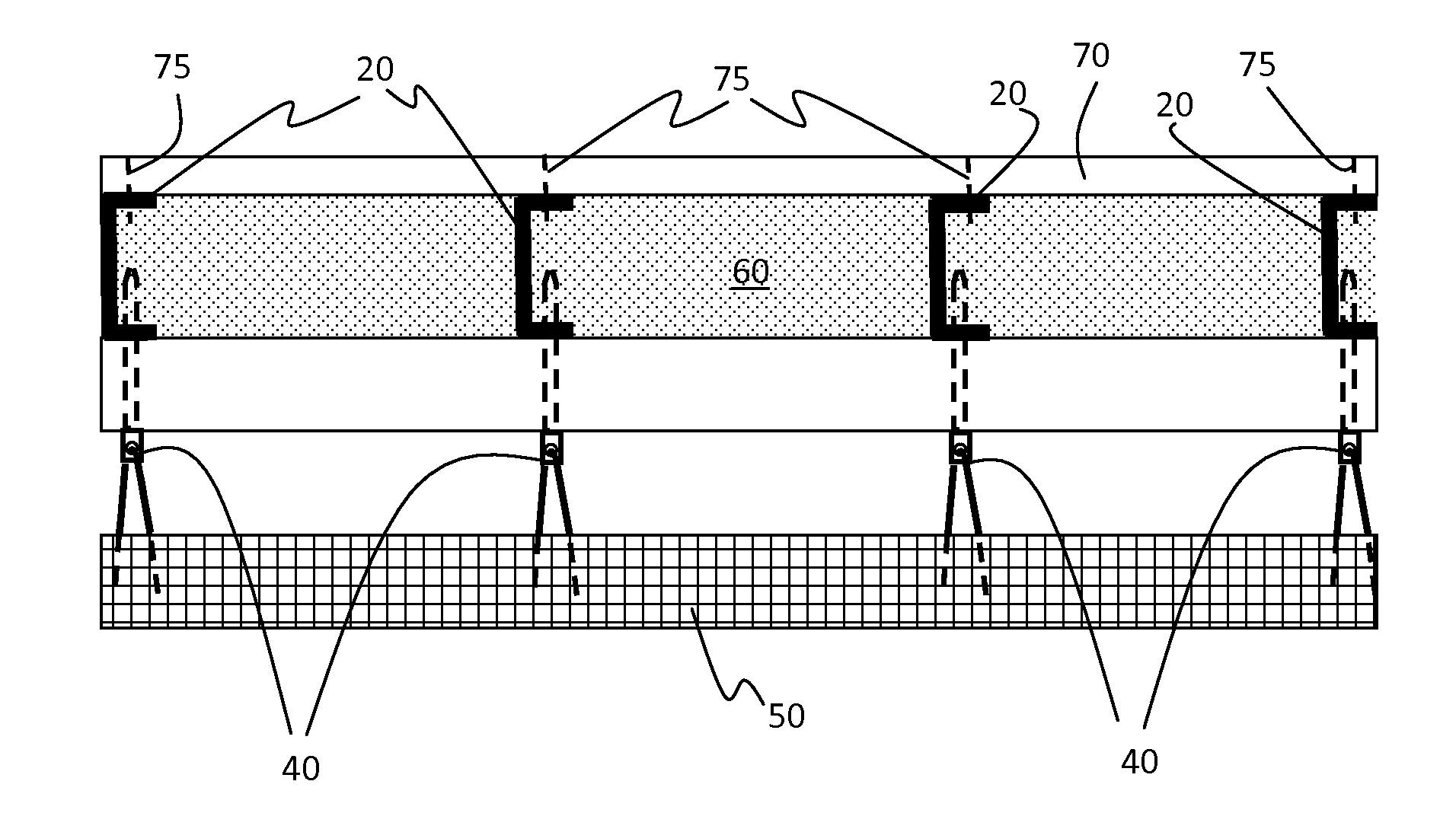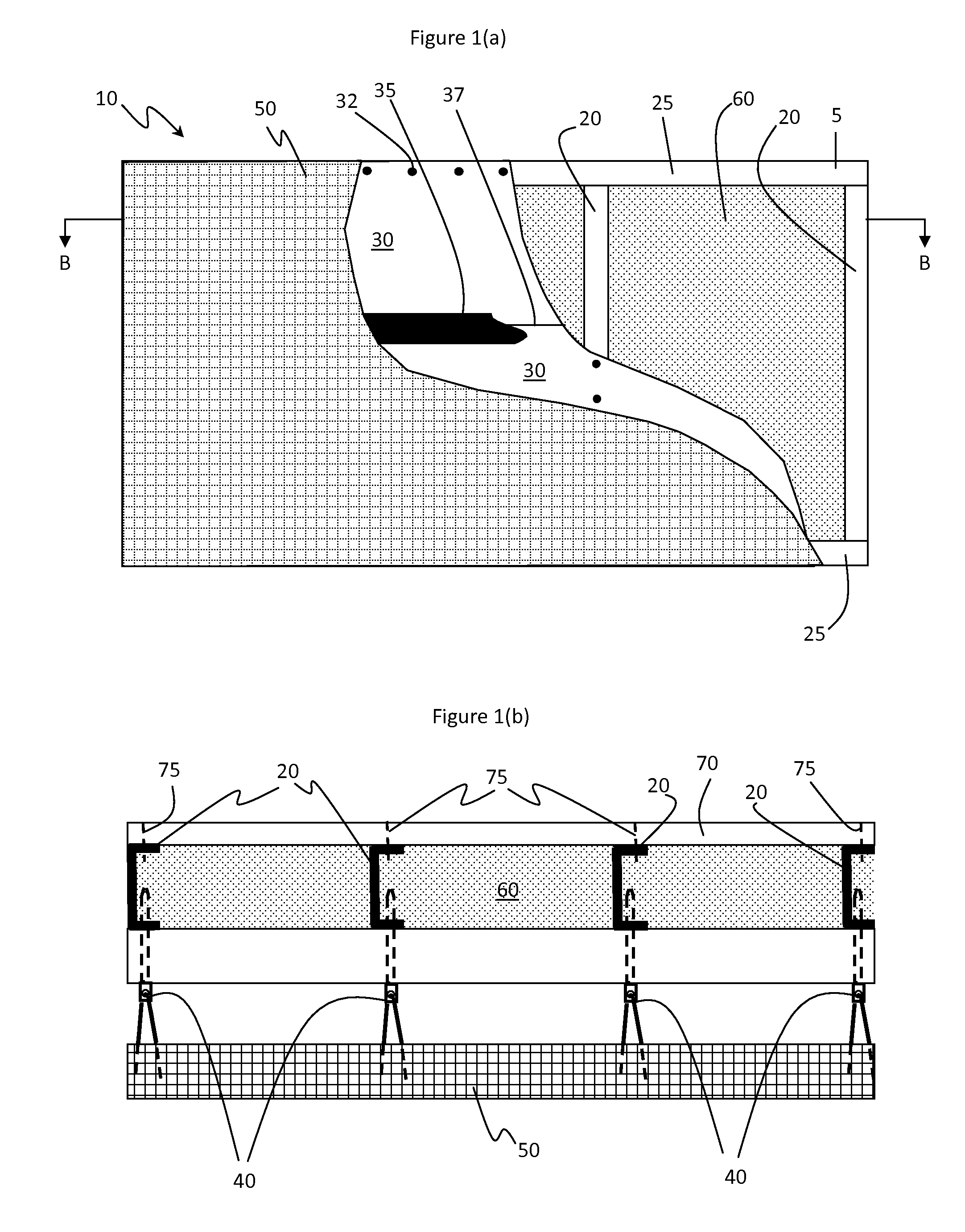Continuously insulated wall assembly
a wall assembly and continuous insulation technology, applied in the field of continuous insulation building wall assemblies, can solve the problems of large installation time, laborious and cumbersome installation of wall systems, and numerous drawbacks of wall systems, so as to reduce the number of external wall components, reduce labor intensity, and reduce the weight of wall assemblies
- Summary
- Abstract
- Description
- Claims
- Application Information
AI Technical Summary
Benefits of technology
Problems solved by technology
Method used
Image
Examples
example
[0056]FIGS. 1(a) and 1(b) provide illustrations of the following structure of the present invention.
[0057]Prepare a 2.4 meter (8 foot) by 2.4 meter (8 foot) support structure, 5, using 2.4 meter (8 foot) long, 9.2 centimeter (3.625 inch) deep 16 gauge steel studs 20 spaced 61 centimeters (2 foot) on center with bracing between studs every 61 centimeters along the 2.4 meter length. Use appropriate top and bottom track materials 25 along the top and bottom of the steel studs 20. For example, use Dietrich DSJ studs with complimentary top and bottom tracks. The support structure 5 has an inside surface and an opposing outside surface spaced apart by the depth of the studs 20.
[0058]Apply two 2.4 meter (8 foot) by 1.2 meter (4 foot) boards of 1.6 centimeter (0.625 inches) thick THERMAX™ ci exterior insulation (THERMAX is a trademark of The Dow Chemical Company) onto the outside surface of the support structure so as to cover the outside surface of the support structure and form a continuo...
PUM
 Login to View More
Login to View More Abstract
Description
Claims
Application Information
 Login to View More
Login to View More - R&D
- Intellectual Property
- Life Sciences
- Materials
- Tech Scout
- Unparalleled Data Quality
- Higher Quality Content
- 60% Fewer Hallucinations
Browse by: Latest US Patents, China's latest patents, Technical Efficacy Thesaurus, Application Domain, Technology Topic, Popular Technical Reports.
© 2025 PatSnap. All rights reserved.Legal|Privacy policy|Modern Slavery Act Transparency Statement|Sitemap|About US| Contact US: help@patsnap.com


